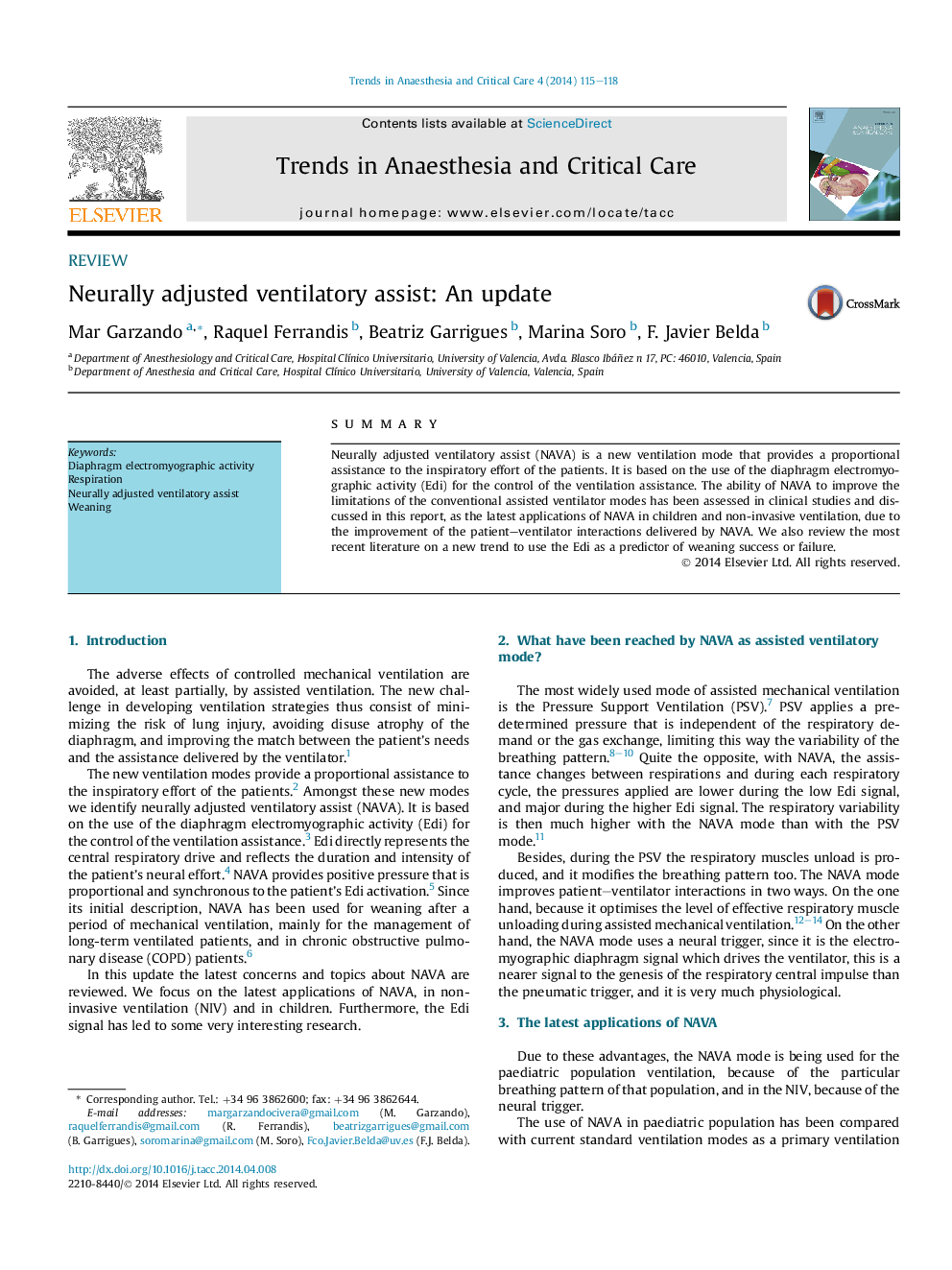| Article ID | Journal | Published Year | Pages | File Type |
|---|---|---|---|---|
| 2772652 | Trends in Anaesthesia and Critical Care | 2014 | 4 Pages |
Abstract
Neurally adjusted ventilatory assist (NAVA) is a new ventilation mode that provides a proportional assistance to the inspiratory effort of the patients. It is based on the use of the diaphragm electromyographic activity (Edi) for the control of the ventilation assistance. The ability of NAVA to improve the limitations of the conventional assisted ventilator modes has been assessed in clinical studies and discussed in this report, as the latest applications of NAVA in children and non-invasive ventilation, due to the improvement of the patient-ventilator interactions delivered by NAVA. We also review the most recent literature on a new trend to use the Edi as a predictor of weaning success or failure.
Related Topics
Health Sciences
Medicine and Dentistry
Anesthesiology and Pain Medicine
Authors
Mar Garzando, Raquel Ferrandis, Beatriz Garrigues, Marina Soro, F. Javier Belda,
